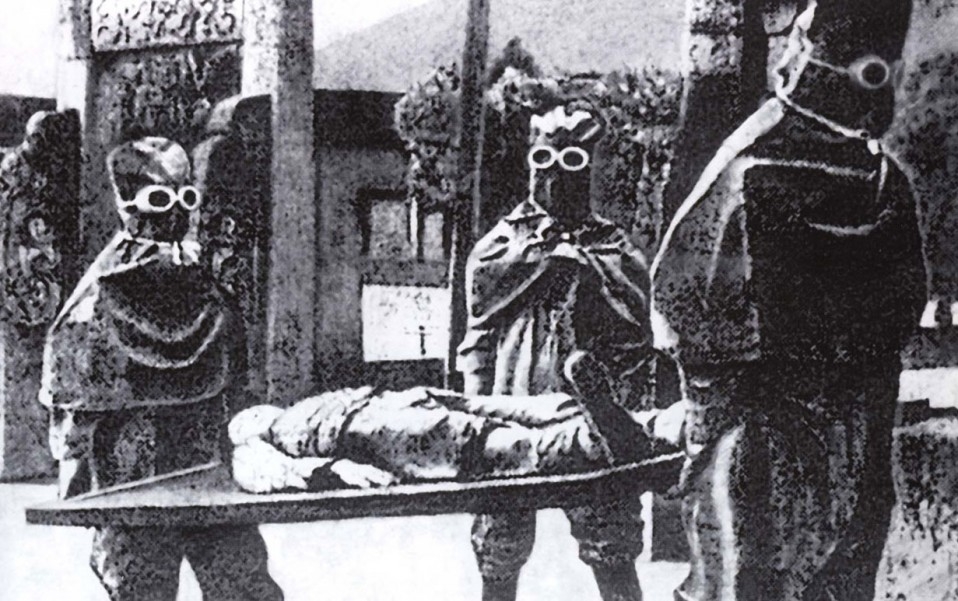
 Unmasking pure evil: The sickening experiments of Unit 731
Unmasking pure evil: The sickening experiments of Unit 731
During 1937-1945 the Japanese underwent truly horrific extents to research biological and chemical warfare.
Unit 731 was a covert research and development unit of the Imperial Japanese Army which focused on human experimentation, this came to be known as one of the most heinous war crimes in history during World War II.
Unit 731 was based at PingFang the district of Harbin.The facility was originally known as an 'Epidemic Prevention and Water Purification Department' of the Kwantung Army. General Shiro Ishii ran the unit and was also the head surgeon and medic. 3,000 men, women and children were subjected to cruel and inhumane experiments, and were often referred to as “logs”. The phrase “how many logs fell" would often be heard amongst guards and workers to refer to the deceased, and was a running joke as the units cover up story was said to be that of a lumber mill.
Chinese, Soviet, Mongolian, Korean, and other Allied POWs were amongst the victims that were provided for by the military police. Other such establishments were built in well-known cities in China, such as Beijing, Nanjing, Guangzhou and Singapore held experimentation facilities spread across China. More than 10,000 doctors, professors and other affluent members of medical professions assembled to take part in these human experiments.
Vivisection Research
Such experiments included vivisection, where prisoners would be subjected to mutilation and invasive surgery. The removal of organs and limbs were conducted to study the effects of diseases on the human body. These experiments were done without the use of anaesthetic and most prisoners would be awake during these horrific ordeals. Limbs would be amputated and reattached to other body parts, this was done to study the results of blood loss, other parts of the body would be frozen to examine gangrene and frostbite. Prisoners would also endure sick procedures were their stomachs would be removed and replaced with their esophaguses.
Germ and biological warfare research
Germ and biological warfare experiments were also looked into, victims would be injected with diseases such as syphilis, smallpox, botulism, and gonorrhoea. Rape was also recurrent amongst guards and prisoners and was used as a means of silencing people into submission. Clothes would be flea infested and infected with the plague.
Cholera, anthrax, and Tularemia were also diseases that were exposed to men, women and infants. Women would often be raped and forced into having unwanted pregnancies, during which doctors would infect mothers with S.T.I's to see if the disease could be passed on to fetuses, after which vivisection would be performed on reproductive organs as well as the fetus.
Other experiments included food and water deprivation, exposure to high levels of radiation and some people were even used as human targets for test weaponry.
The cover-up and destruction of evidence
These experiments continued until the end of the war on August of 1945, the red army had already infiltrated the compound. The unit had to be abandoned, and members were ordered by general Ishii "to take the secret to the grave", with threats of persecution and death many fled to Japan.
The army tried to destroy several of the units spread out in China but the construction of these buildings was so well built that most stayed intact. To make matters worse, America secretly granted immunity to researchers involved in Unit 731, in exchange for the data gathered in these torture chambers. The U.S. did not sentence the researchers for their war crimes so all information obtained in bioweapons was co-opted into the U.S. biological warfare program.
Douglas MacArthur a Supreme Commander of the Allied Forces, wrote to Washington that "additional data, possibly some statements from Ishii probably can be obtained by informing Japanese involved that information will be retained in intelligence channels and will not be employed as 'War Crimes' evidence."
Victims accounts of these unspeakable crimes were largely discredited in the west as communist propaganda. Many untold stories did not ever leave the gates of Unit 731, but a museum stands today in remembrance for all those who survived and lost their lives to the unspeakable cruelty they were forced to endure by Unit 731.
